People
Who Was the Most Influential Artist of the Decade? We Surveyed Dozens of Art-World Experts to Find Out
Industry leaders weigh in on which artists define the era.
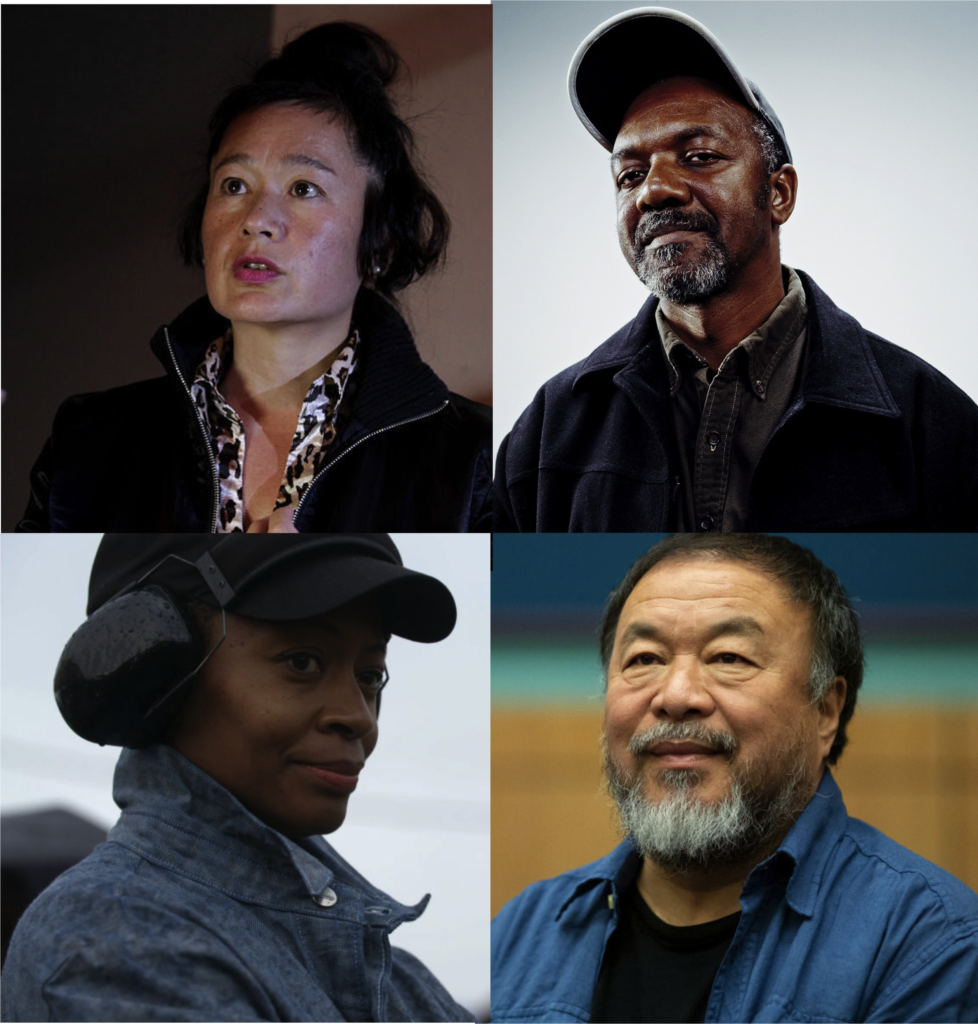
Industry leaders weigh in on which artists define the era.

Artnet News

As the turbulent and event-filled 2010s come to an end, we asked more than 100 artists, curators, gallerists, and other art-world figures to tell us their picks of the most influential art and art-makers of the decade. Here is a selection of their responses.
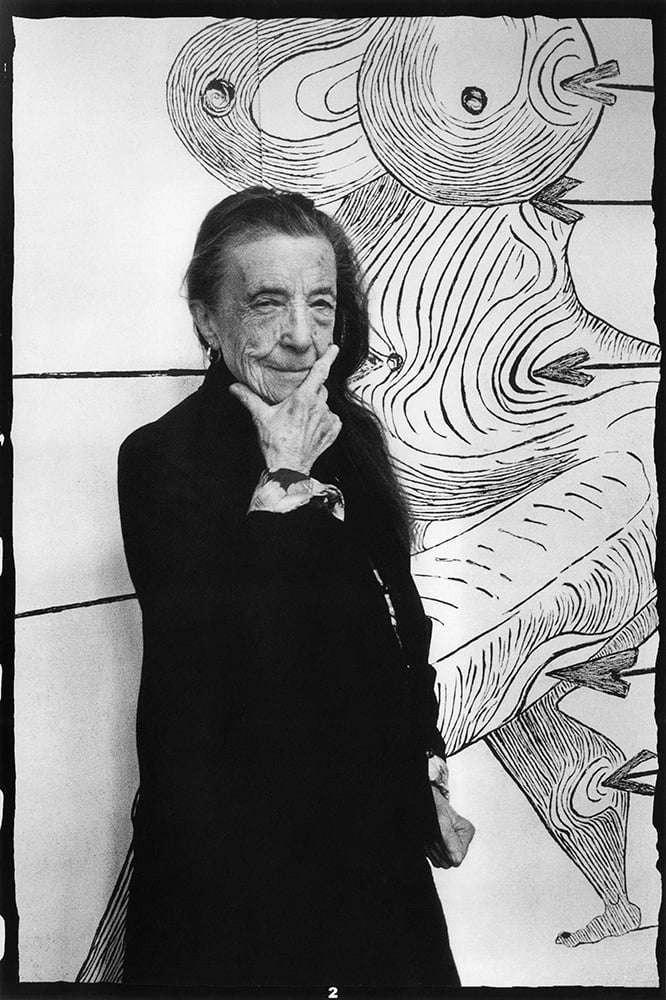
Louise Bourgeois in front of STE SÉBASTIENNE in her Brooklyn studio (1993). Photo: © Vera Isler, © The Easton Foundation/VAGA, NY.
At the beginning of this decade we lost an artist whose work has a deep personal significance for me and is a source of inspiration for younger generations of artists: Louise Bourgeois.
—Manuela Wirth, president, co-founder of Hauser and Wirth
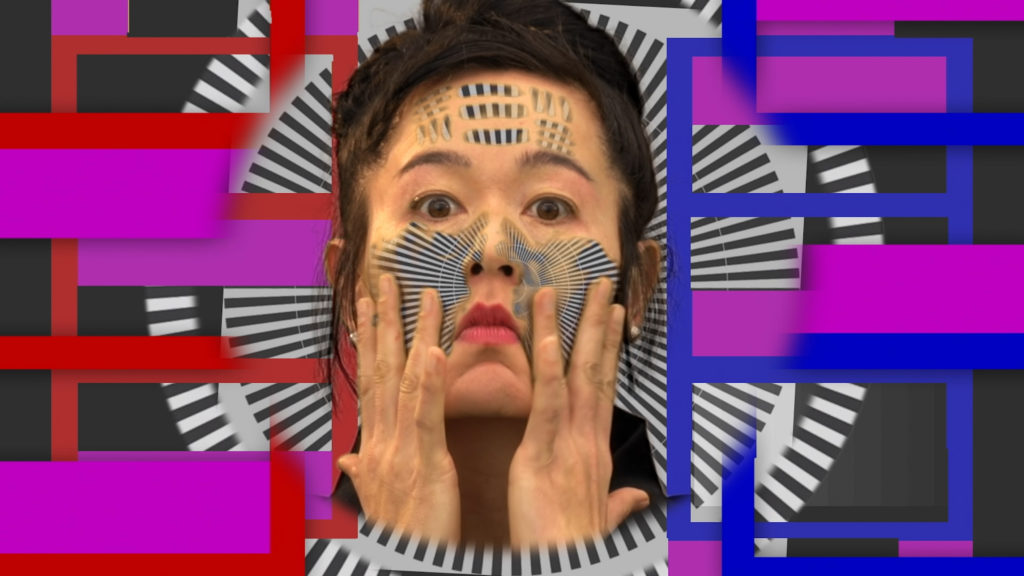
Hito Steyerl, still from How Not to Be Seen: A Fucking Didactic Educational, (2013). Image CC 4.0 Courtesy of the Artist, Andrew Kreps Gallery (New York) and Esther Schipper Gallery (Berlin).
Hito Steyerl has re-defined the conversation around politics and digitization through the lens of theory and artistic production and therefore re-positions the function of an artist in society.
—Krist Gruijthuijsen, director of the KW Institute for Contemporary Art
As both a compelling visual artist and remarkable writer, Hito Steyerl is a true multi-hyphenate. Her books Wretched of the Screen (2012) and Duty Free Art (2019) helped frame the way that we look at art today. For the past decade, she has been a staple of high-visibility exhibitions globally including this year’s Venice Biennale. Videos like How Not to be Seen (2013) and Liquidity Inc. (2014) look at the complex interminglings of socio-political tensions, economics, and corporate aesthetics. Steyerl’s work is so clearly and powerfully of the time in which it was created. Her solo show at Artists Space in 2015 remains one of my favorite exhibitions of the last decade.
—Justine Ludwig, executive director of Creative Time

Cameron Rowland Attica Series Desk, 2016. Steel, powder coating, laminated particleboard, distributed by Corcraft 60 × 71.5 × 28.75 inches. Rental at cost. The Attica Series Desk is manufactured by prisoners in Attica Correctional Facility. Prisoners seized control of the D-Yard in Attica from September 9th to 13th 1971. Following the inmates’ immediate demands for amnesty, the first in their list of practical proposals was to extend the enforcement of “the New York State minimum wage law to prison industries.” Inmates working in New York State prisons are currently paid $0.10 to $1.14 an hour. Inmates in Attica produce furniture for government offices throughout the state. This component of government administration depends on inmate labor. Rental at cost: Artworks indicated as “Rental at cost” are not sold. Each of these artworks may be rented for five years for the total cost of the Corcraft products that constitute it. Courtesy of the artist and ESSEX STREET, New York.
The artist Lorraine O’Grady has spent decades making clear that the best way to see something is to situate it against something else, in the form of a diptych. Arthur Jafa has also proven that the way to understand an image is to see it contextualized by other images. Taking up the cause of Both/And, rather than Either/Or, I offer the following juxtapositions.
The most influential artist to emerge in this decade is Cameron Rowland. Over the last few years his projects have reactivated the apparatus of conceptual art toward vitally important conversations about the politics of black subjectivity and the insidious civic systems of oppression that are the legacy of the United States. Hito Steyerl has spent the decade mining networks, surveilling surveillance and militarization, and investigating alternative economies. Their shared brilliance points to future uses of critique.
—Catherine Morris, curator of the Elizabeth A. Sackler Center for Feminist Art at the Brooklyn Museum
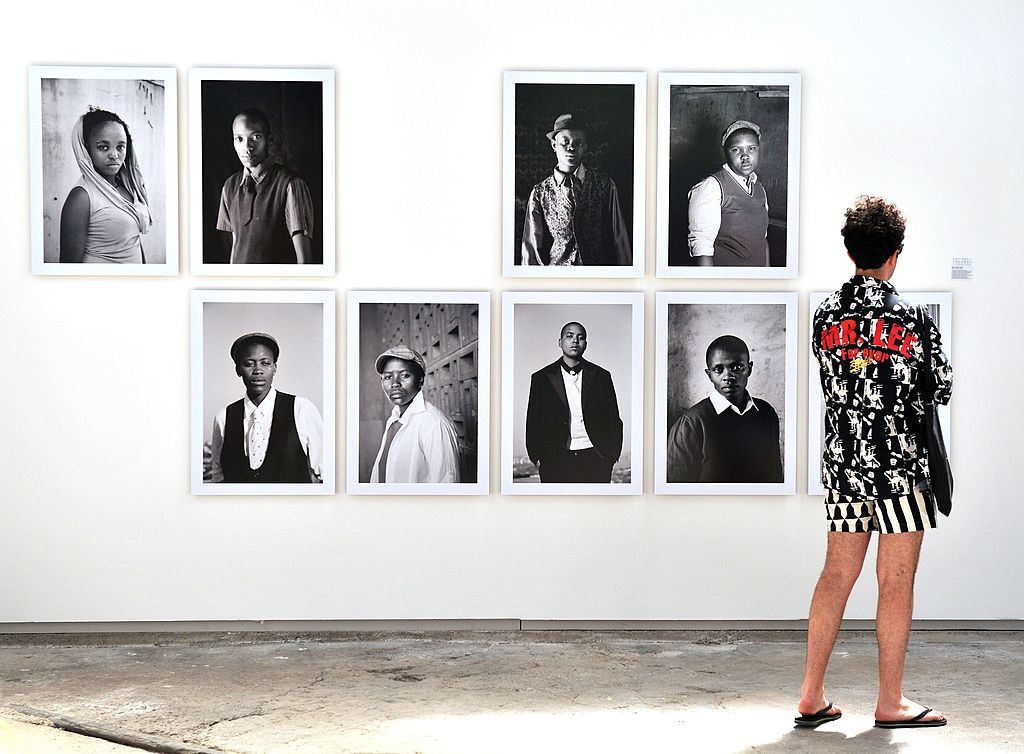
Pictures by South African photographer Zanele Muholi at the 43rd annual Rencontres d’Arles photography festival in France. Photo by Gerard Julien/AFP/Getty Images.
With an upcoming major mid-career survey exhibition at the Tate Modern, Muholi’s career has gone from strength to strength over the last decade. Starting the decade with their “Faces and Phases” exhibition at Stevenson, an exhibition that has since traveled to galleries globally, their work has been included in more than 150 group exhibitions and 50 solo shows all over the world. Muholi has been a prominent voice in the LGBTQI+ community, both in South Africa and over the world, primarily confronting issues of race, gender and sexuality in their work.
—Touria El Glaoui, founding director of the 1-54 fair
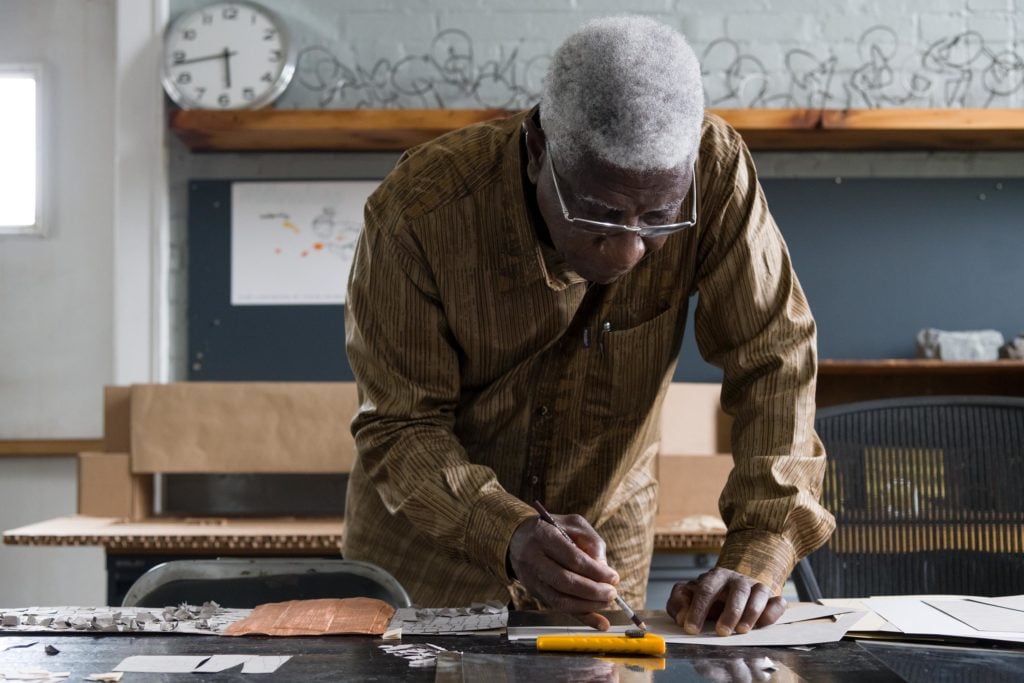
El Anatsui working on his installation for the 57th Carnegie International. Photo: Bryan Conley, courtesy of the Carnegie Museum of Art.
In these times with dubious and easy agreement, I’m careful with lists and normative questioning as they tend to the middle and to arrive at some sort of consensus, which I find to be revisionist and not really in solidarity with the underdog. So, I will respond to these with a caveat to say that I deliberately will avoid mentioning Okwui Enwezor and his unquestionable influence over the last decade and beyond because he does not need further deification.
El Anatsui and a close second would be jointly Zanele Muholi and Emeka Ogboh. Others with more acclaim and influence achieved this before this period. El’s influence on the younger generation of great artists from the Nsukka school is immense and on artists like Ibrahim Mahama and a few others while not so obvious is massive.
—Azu Nwagbogu, founder and director of the African Artists’ Foundation
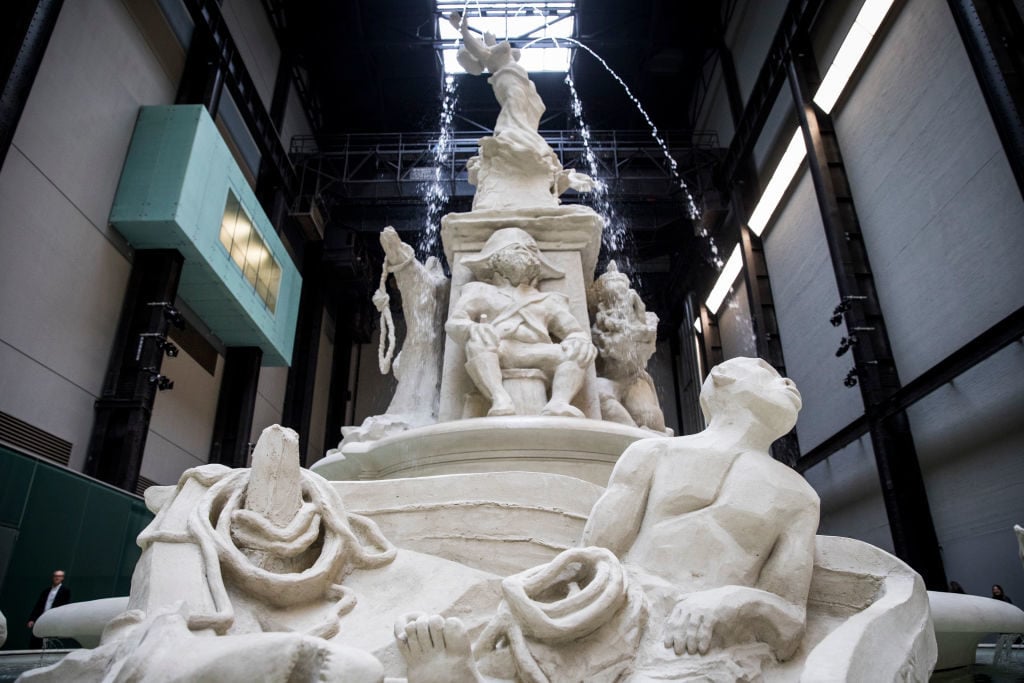
Fons Americanus by Kara Walker is unveiled as the latest Hyundai Commission at Tate Modern on September 30, 2019 in London, England. Photo by Tristan Fewings/Getty Images.
The first part of the decade saw her monumental, elegiac installation Sugar Baby at the Domino Sugar Factory and the decade ended with the opening of her triumphant installation Fons Americanus at the Tate Turbine Hall. She was already influential before this decade, but she owned the teens by continually pushing herself to new heights without repeating herself, and she shows no signs of slowing down.
—Eva Respini, chief curator at ICA Boston
It is not an accident that Kara Walker is currently exhibiting in the Turbine Hall of Tate Modern because her style of politically motivated art, exploring issues of race, slavery and colonialism, has been such a dominant characteristic of art of the last decade.
—Charles Saumarez Smith, chairman of the Royal Drawing School and Watercolour World
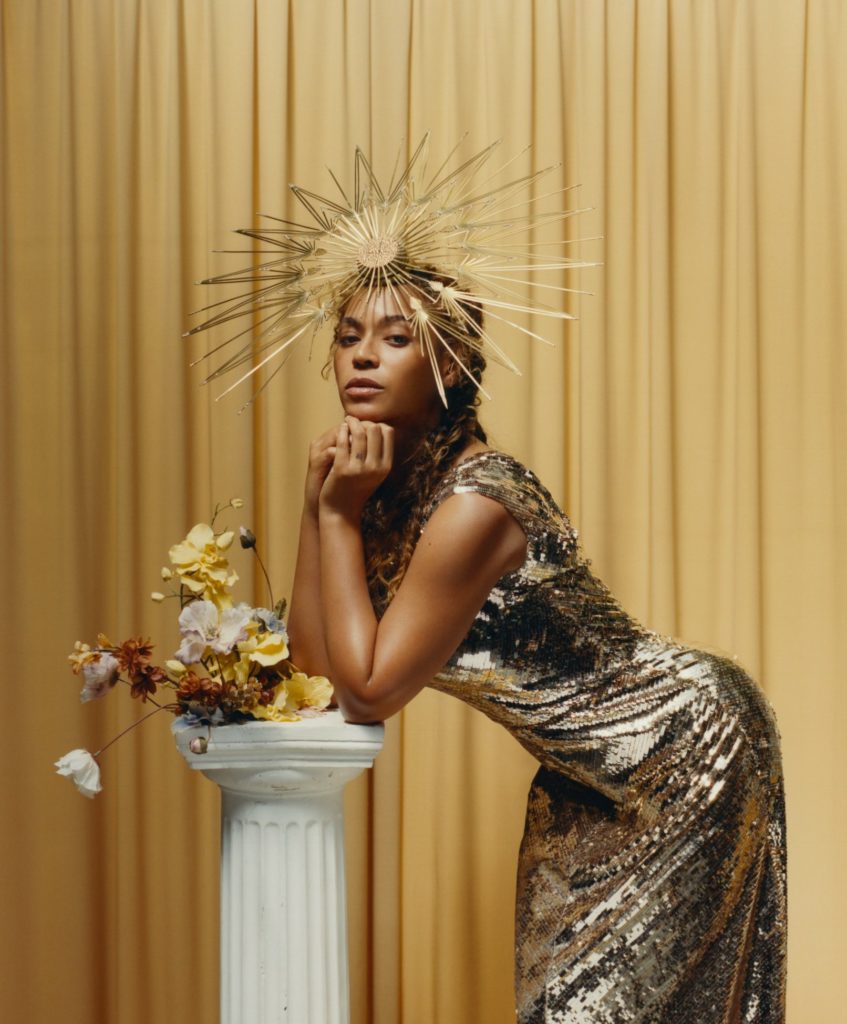
Tyler Mitchell’s portrait of Beyoncé for Vogue magazine. Courtesy of the artist.
There isn’t anyone who has been more influential across more industries, landscapes, or genres in the 2010s. Among many other things, she has created new industry standards (with Beyoncé, her 2013 surprise visual album, for example); delved into the fine art world, collaborating directly with artists like Awol Erizku and Tyler Mitchell, and drawing inspiration from others like Julie Dash and Arthur Jafa—and then used her massive platform to bring new audiences to their work; and staged a complete takeover of Coachella 2018 (i.e. Beychella) less than a year after giving birth to twins, highlighting the indelible contributions of African Americans, from “Lift Ev’ry Voice and Sing” to HBCU Marching Bands. Through it all she has maintained full creative license and control, offering a powerful vision of what and how an artist can be in the 21st century.
—Rujeko Hockley, curator at the Whitney Museum of American Art

Theaster Gates with part of the Johnson Publishing Archive. Photo by Sarah Pooley, courtesy of the artist.
Theaster Gates expanded the practice of the artist studio to include community engagement in ways that had not been possible previously.
—Elizabeth Dee, co-founder and CEO of the Independent Art Fair
To be an influential artist is to recalibrate what art might be, where it might be seen, why it might be relevant, and with this to bring about structural change in museums. Theaster Gates does all this and more. His is an artwork that is erudite and restless, with porous boundaries that keep on transforming in response to art and the world that holds it. Pointing to Gates’s work is like pointing to an idea: it is fugitive, fleeting, and forceful.
—Lisa Le Feuvre, executive director of the Holt/Smithson Foundation

Arthur Jafa. Photo by Robert Hamacher.
Jafa’s Apex, a never-ending photo sequence set to hypnotic Detroit techno beats by Robert Hood, and his now widely shown video Love is the Message, The Message is Death basically break all the rules I was taught in undergrad New Genres: no children, no animals, no sex, no violence, and no popular music (the idea being viewers would be too distracted to receive the real message), but the effect is that the cells in your body seem to rearrange so that you are not the same person as before. If that is not a “most influential” visual experience then I don’t know what is.
—Anna Glantz, artist

Still of Robin Meier, courtesy of YouTube.
In collaboration with some of the world’s most advanced science labs, Meier has created during this last decade concertos for mosquitoes, choreographies with ants, and installations where flashing fireflies synchronized chirping crickets and generative music.
—Marc-Olivier Wahler, director of the Geneva Museum of Art and History

Wade Guyton. Photo by Brill/ullstein bild via Getty Images.
From my perspective Wade Guyton is the most influential artist of the decade because he is able to combine the very current discourse of the digital age with art history. There are so many young artists who are tremendously influenced by him.
—Yilmaz Dziewior, director of Museum Ludwig, Cologne
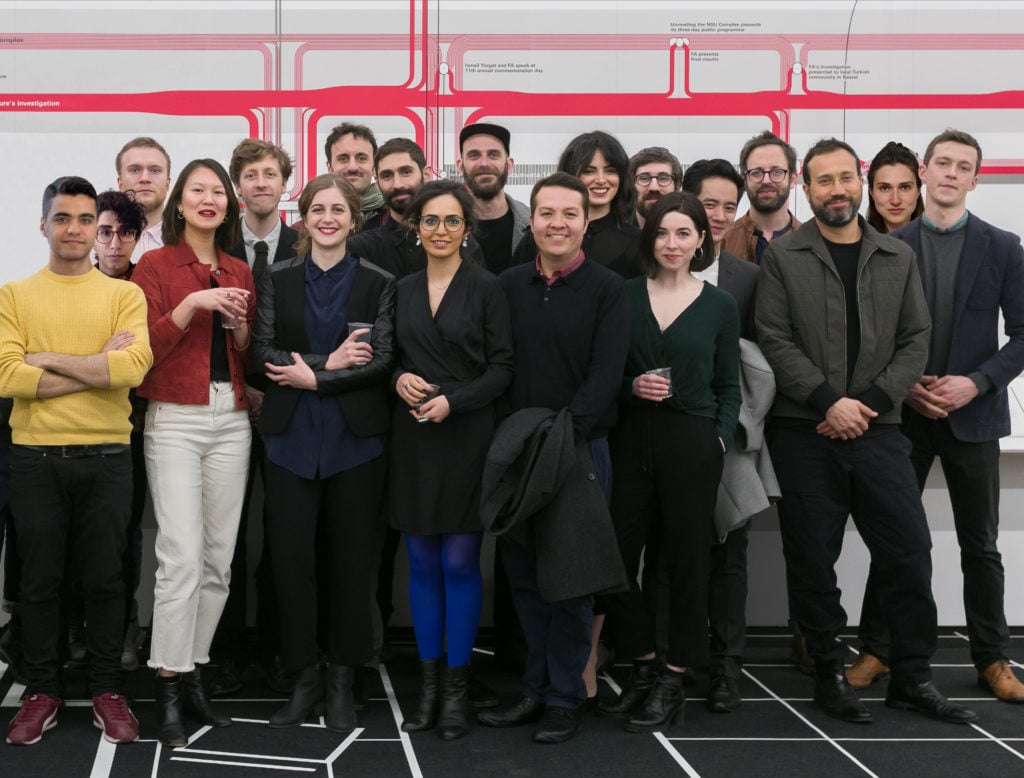
Collage by Forensic Architecture, 2018.
We live in a world being ripped apart by violence, most of which is carried out by states and corporate conglomerates. Forensic Architecture’s visually compelling and technologically sophisticated application of a “counter-forensic gaze” demonstrates how art can unmask the workings of state power in our time.
—Coco Fusco, artist and activist
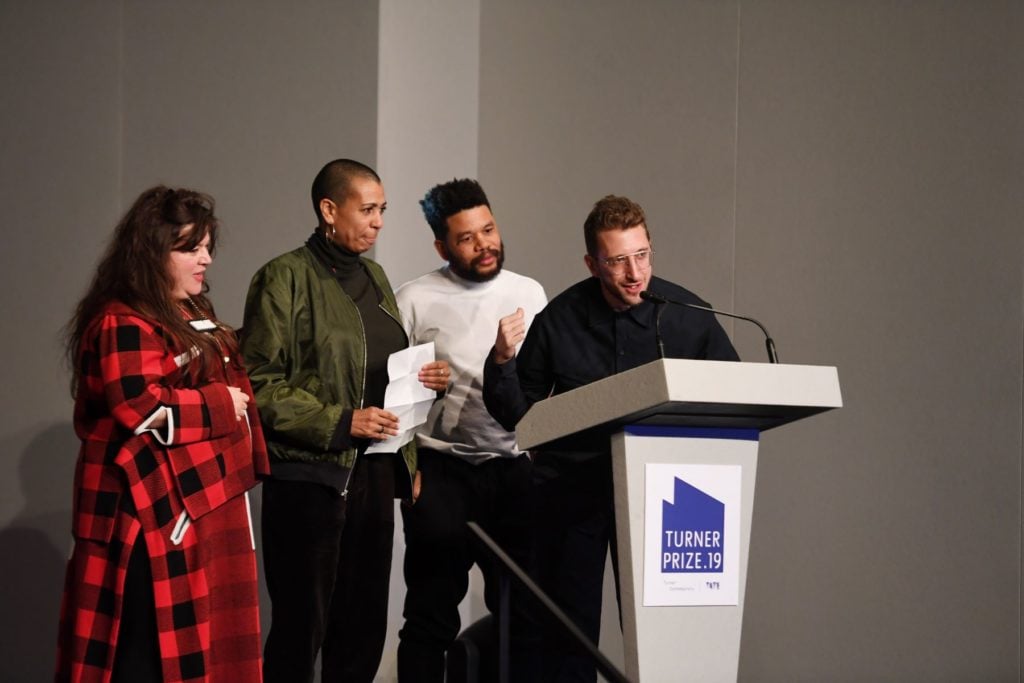
Tai Shani, Helen Cammock, Oscar Murillo and Lawrence Abu Hamdan. Photo by Stuart C. Wilson/Stuart Wilson/Getty Images for Turner Contemporary.
Collectives, alliances, initiatives and artists-run spaces, such as Art Labor Collective, Chimurenga, Dirt Palace, Forensic Architecture, Green Papaya, Lifepatch, Mujeres Creando, and, last but not least: this year’s Turner Prize nominees. These collectives do not even necessarily produce artworks, but rather devote their collaboration to critical debate, and to the sparking of public critical discussions on social and political issues above all else. This is a clear statement for solidarity and social responsibility, and the only way out at a time where environmental change and social injustice are the biggest problems of the entire planet, which can only be faced collectively.
—Anna-Catharina Gebbers, curator of the Nationalgalerie im Hamburger Bahnhof – Museum für Gegenwart – Berlin
In our society, there are very few fields left that are free from the acceleration caused by economic interests, and that have the power to guide our senses, thoughts, and perceptions of the world around us into new categories. What art has taught us in the last 10 years is to understand how important diversity is, to constantly change our point of view, to face the unknown (and thus try to meet it as often as possible), to show solidarity and humanity, and to refuse to exclude one another.
Today, at the end of 2019, as I sit at my desk and think about which artworks, exhibitions, and people in the art world have been most influential this decade, I’ve come to the conclusion that it is a multitude of each rather than just a few. So I’d like to emphasize that none of the following examples can claim to be superlative, objective, or unique. For me, all those who recognize the crisis and are ready to face it resonate between the lines of my answers, too.
As the joint winners of the 2019 Turner Prize wrote in a letter: “At this time of political crisis in Britain and much of the world, when there is already so much that divides and isolates people and communities, we feel strongly motivated to use the occasion of the Prize to make a collective statement in the name of commonality, multiplicity, and solidarity—in art as in society.”
—Joanna Kamm, director of Liste
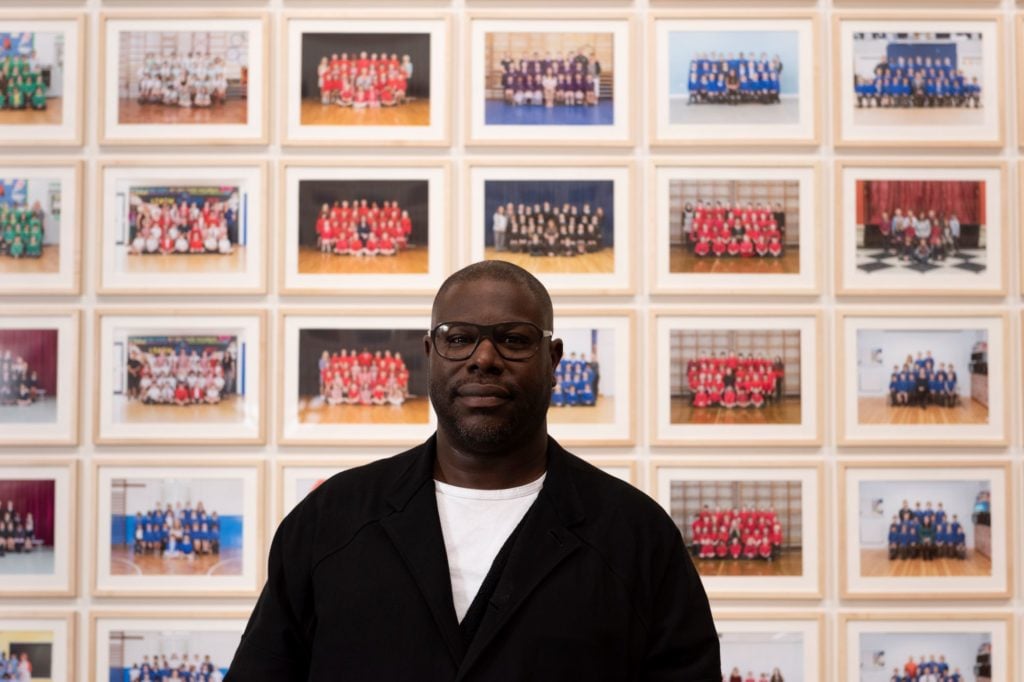
Steve McQueen in Year 3 at Tate Britain. ©Tate. Photo Jessica McDermott.
Steve Rodney McQueen, British artist, film director, and screenwriter who won an Oscar, among other prizes, has transcended all possible boundaries of what it means to be an artist of global influence at a time when boundaries are there to be broken. He is an exemplar of what is possible.
—Julia Peyton-Jones, senior global director at Thaddaeus Ropac
![Installation view of Lisa Reihana's <i> In Pursuit of Venus [infected]</i> (2015-17). Courtesy of Auckland Art Gallery.](https://news.artnet.com/app/news-upload/2019/12/maxresdefault-2-1024x576.jpg)
Installation view of Lisa Reihana’s In Pursuit of Venus [infected] (2015-17). Courtesy of Auckland Art Gallery.
Having been a leader in the development of contemporary art and contemporary Māori art in Aotearoa New Zealand since the 1990s, Lisa Reihana has planted those interests firmly on the global stage with her work In Pursuit of Venus [infected] that evolved from a two-channel video in 2012 to the 60-foot-long hit of the 2017 Venice Biennale (Auckland Art Gallery Toi o Tāmaki, New Zealand). Through such persuasive storytelling and the groundbreaking use of highly sophisticated technology, she has both challenged outdated colonial views of the Pacific, and created new ways for artists to create in the coming decade.
—Michael Brand, director of the Art Gallery of New South Wales

Anne Imhof. Photo by Nadine Fraczkowski.
Terrible question. If you twist my arm to name one, I would single out Anne Imhof for the intensely charged performance-installations she created, inventing a new format of an exhibition, a veritable post-internet experience.
—Nina Zimmer, director of the Zentrum Paul Klee and the Museum of Fine Arts Bern
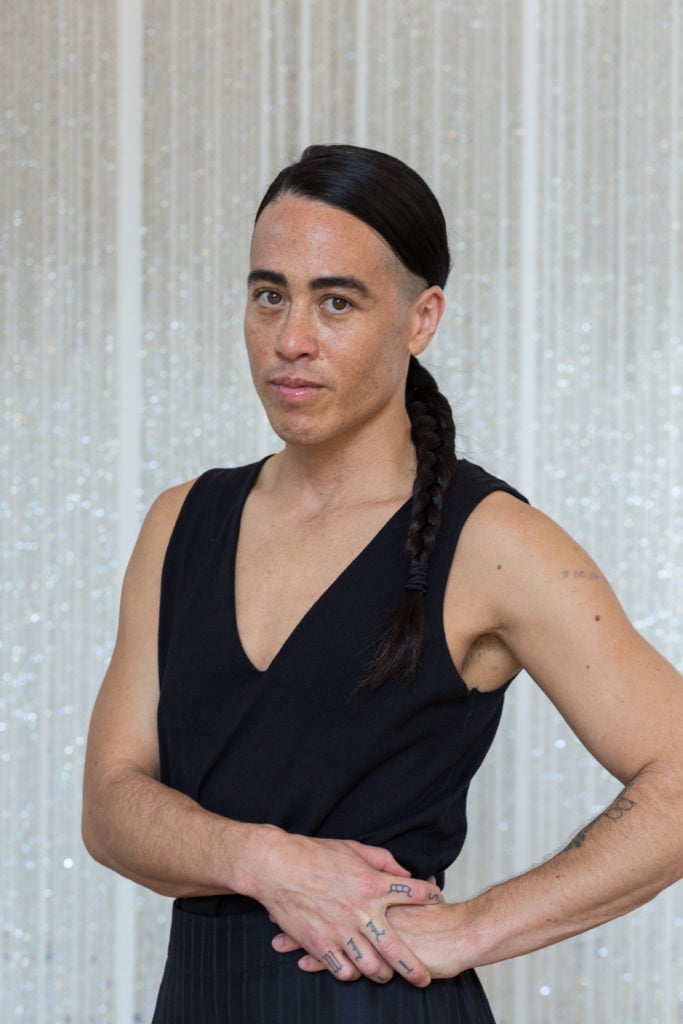
Germany Berlin American artist Wu Tsang during her stay at the Martin-Gropius-Bau. Photo by: Karsten Thielker MacArthur Foundation, Courtesy of John D. & Catherine T. MacArthur Foundation.
A crucial aspect of Wu Tsang’s practice is her radical approach to documentary film. Her work allows cinematic parallels to emerge between the construction of the moving image, the movement of the performing body and the movement inherent to migration. The way she uses the camera enables gesture, choreography, and dance to serve as narrative forces.
—Stephanie Rosenthal, director of Gropius Bau, Berlin
Cory Arcangel, Kerry James Marshall, Wu Tsang, Maurizio Cattelan.
—Lisa Schiff, art advisor
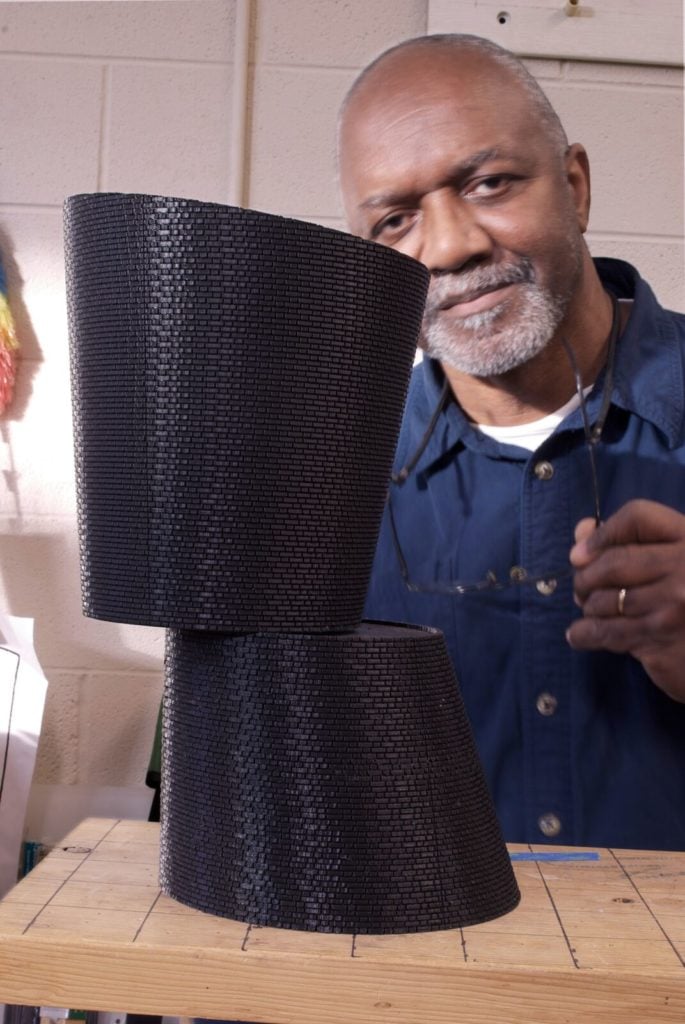
Kerry James Marshall with A Monumental Journey model. Photo courtesy of Kerry James Marshall Studio.
Chicago-based artist Kerry James Marshall most certainly paved a path for the much-needed increased visibility of artists from the Black diaspora this decade, particularly those working in figurative painting. A major touring exhibition of his paintings, “Kerry James Marshall: Mastry,” was one of the highlights of the decade and gave context for a wave of artists from a younger generation such as Amy Sherald, Kehinde Wiley, Jordan Casteel, Lynette Yiadom-Boakye, among others, but also opened doors to overlooked artists from the 1960s and 1970s such as the Africobra artists from the south side of Chicago.
—Julie Roidrigues Windholm, director and chief curator of the DePaul Art Museum
Even though Marshall’s career has been established for a while now, it really hasn’t been until the past decade that we’ve seen his influence spread so widely. In just about every graduate school I’ve visited recently, there is someone making representational, allegorical paintings about identity.
—Jason Stopa, artist
Marshall’s mission to represent the black figure and black life within the wholly white painting canon has been hugely influential on all aspects of current art making and art narratives. It is nothing less than an imperative to recognize black humanity. His influence has made certain modes of painting a political act.
—Gina Beavers, artist
Kerry James Marshall set a sea change in motion in 2018 when, with the sale of Marshall’s monumentally scaled “Past Times”, a record was set at Sotheby’s for the highest price paid, $21m, for a work of art by a living African American artist. In Marshall’s wake the art world became hungry for a new generation of African and African American artists whose figurative paintings depict black people in everyday scenes at home in urban, suburban, and interior settings, in states of rest and leisure. Marshall also set a high bar for anyone interested in pictures and picture making. His 2016 retrospective at the MCA Chicago and the Metropolitan Museum of Art was universally praised and led to the beautiful 2018 retrospective of one of Marshall’s teachers, Charles White, at the Art Institute of Chicago and the Met.
—Arnold Kemp, dean of graduate studies, School of the Art Institute of Chicago
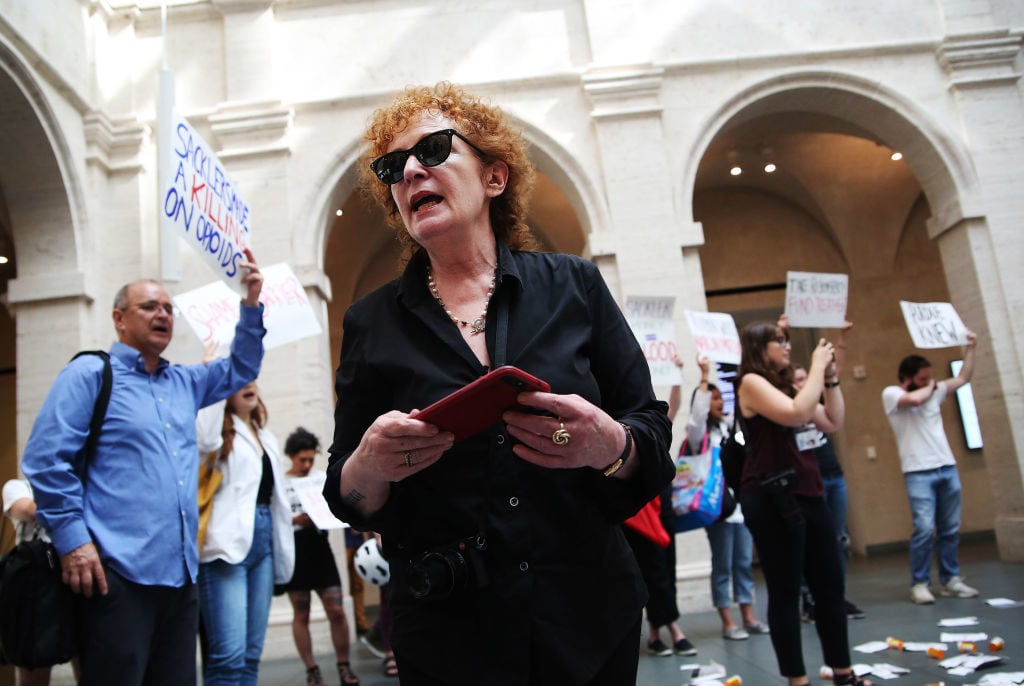
Nan Goldin leads a demonstration at the Harvard Art Museums on July 20, 2018, to protest the benefactor of the Sackler Art Museum. Photo by Erin Clark for The Boston Globe via Getty Images.
The rise in artistic action and activism centered on museum ethics and governance has marked the last half of the decade. The protests against Big Pharma staged at major museums around the world by Nan Goldin’s P.A.I.N. (Prescription Addiction Intervention Now) demonstrate the power of art and one individual to make change.
—Olga Viso, independent curator
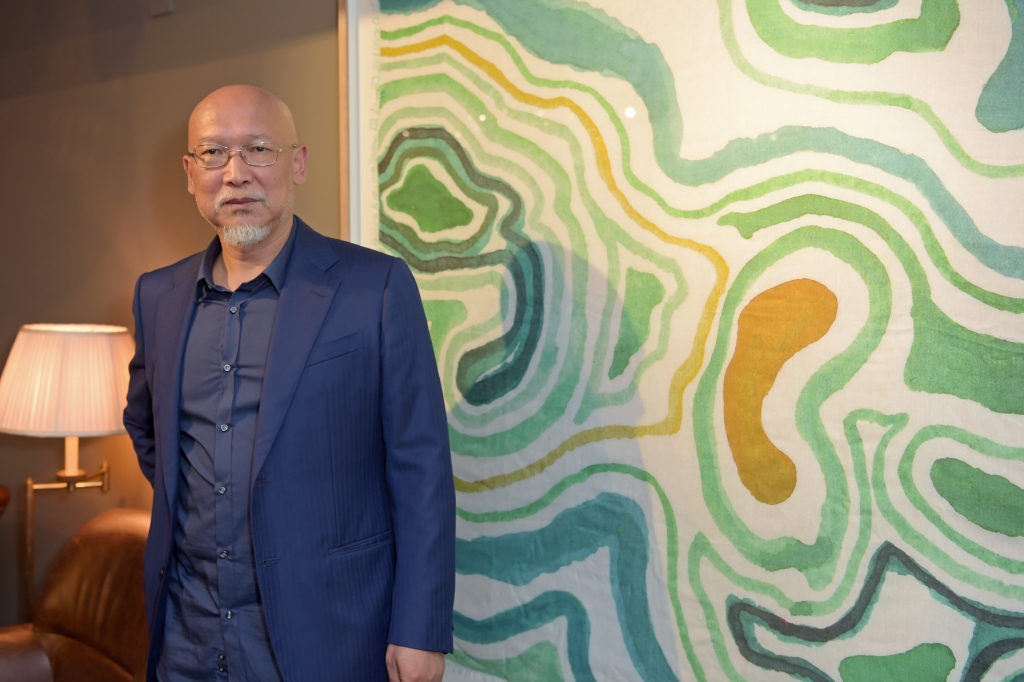
Zhang Enli in London, 2019. Photo by David M. Benett/Dave Benett/Getty Images for Fortnum & Mason.
To say Zhang Enli is a leading Chinese contemporary artist is an understatement. His work in the past decade is the lens through which the world sees China’s meteoric social and economic advancement, and how that has changed people’s lives.
—Adrian Cheng, founder of the K11 Art Foundation and K11
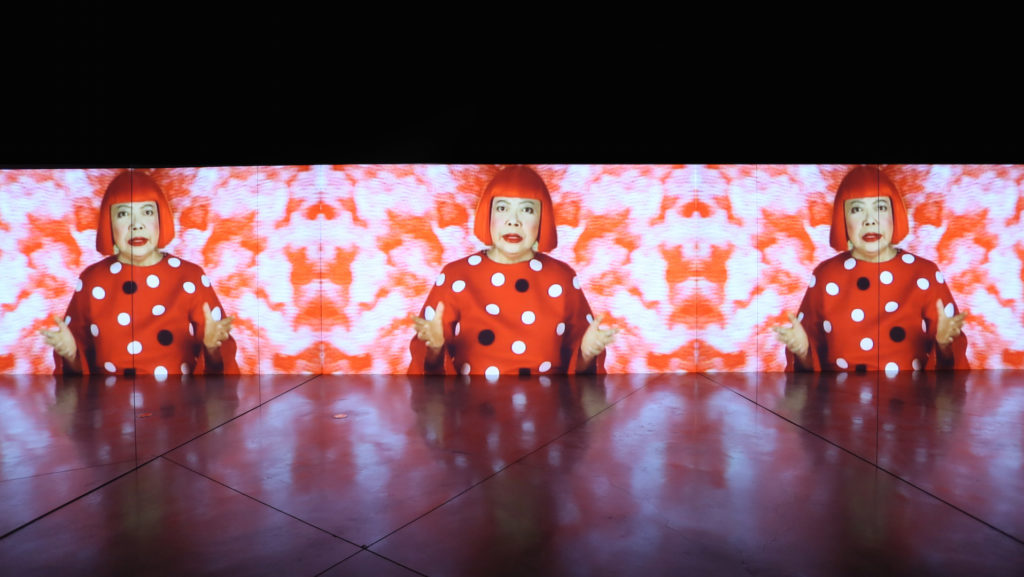
Installation view of “YAYOI KUSAMA: Life is the Heart of the Rainbow” at the National Gallery Singapore. Courtesy of the Museum.
There are few artists in their nineties who can speak to a new generation about the importance of art and life!
—Melissa Chiu, director of the Hirshhorn Museum & Sculpture Garden
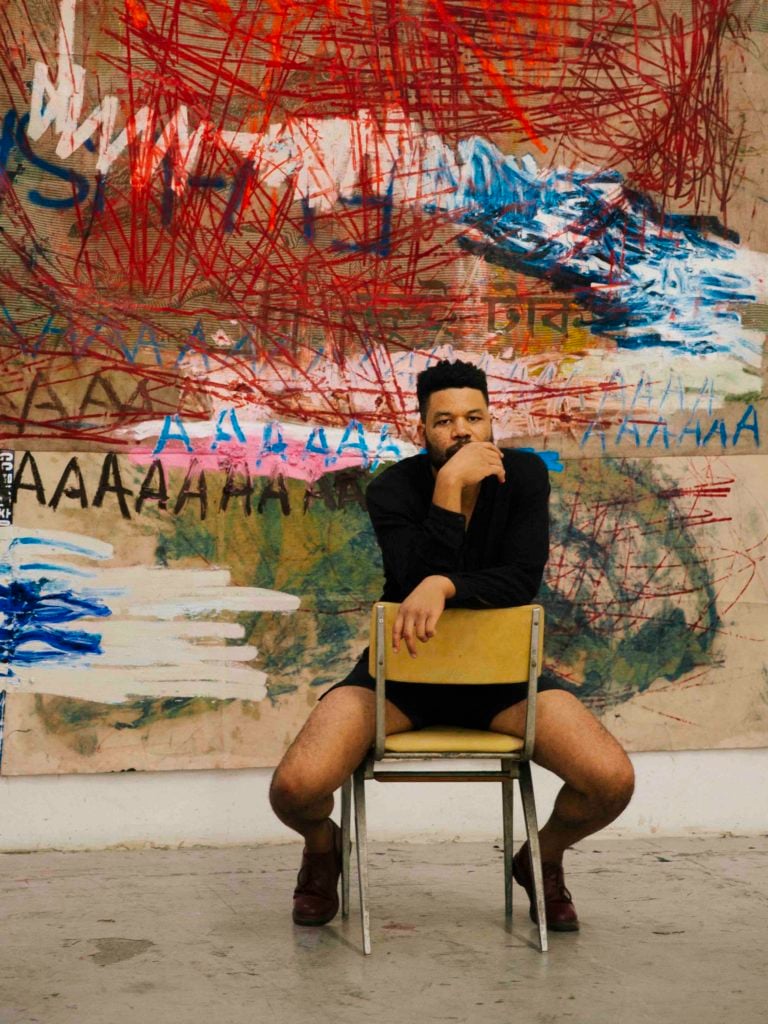
Oscar Murillo, 2018. Photo by Greg Lin Jiajie. © Oscar Murillo. Courtesy the artist and David Zwirner.
Oscar Murillo is an inspiring and inspired artist that continues to thrill me with every new body of work.
—Javier Peres, founder of Peres Projects
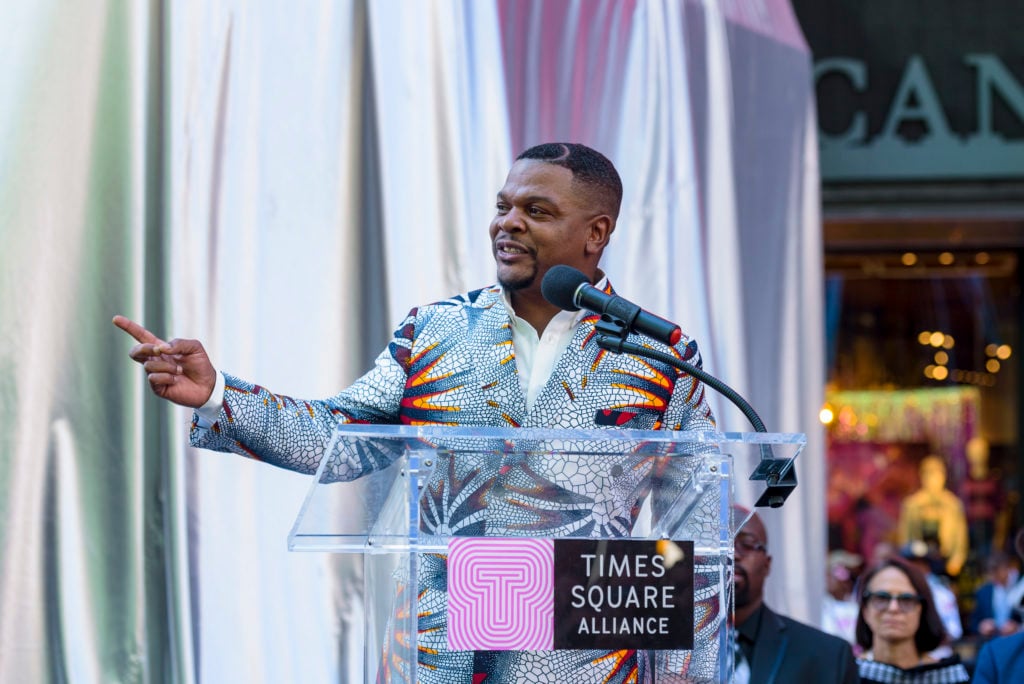
Kehinde Wiley at the opening ceremony for Rumors of War (2019). Photo: Ian Douglas for Times Square Arts.
From this year’s Rumors of War to his portrait of President Barack Obama and Kehinde Wiley’s inclusion in the ground-breaking touring exhibition “30 Americans,” Wiley’s artwork has touched nearly every critical aspect of American society over the past decade: politics, history, social justice, inclusion, and more.
—Salvador Salort-Pons, director of the Detroit Institute of Arts
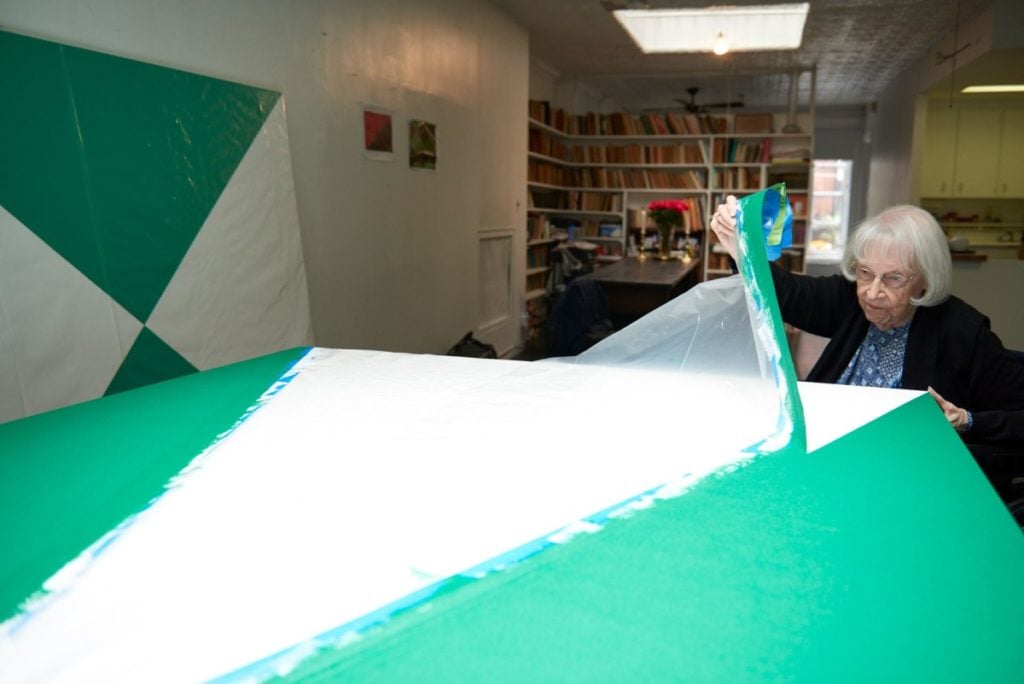
Carmen Herrera in her New York studio. Photo: Jason Schmidt © Lisson Gallery.
Although she’s been working for almost seven decades, she was only “discovered” quite recently. Her story— as a Cuban-born woman abstract artist working in a male, Euro-US-dominated art world even still at age 104—has opened the floodgates of galleries and museums reexamining the work of let’s say “non-young” artists, many of whom have been under-recognized for decades.
—Estrellita Brodsky, collector and art historian
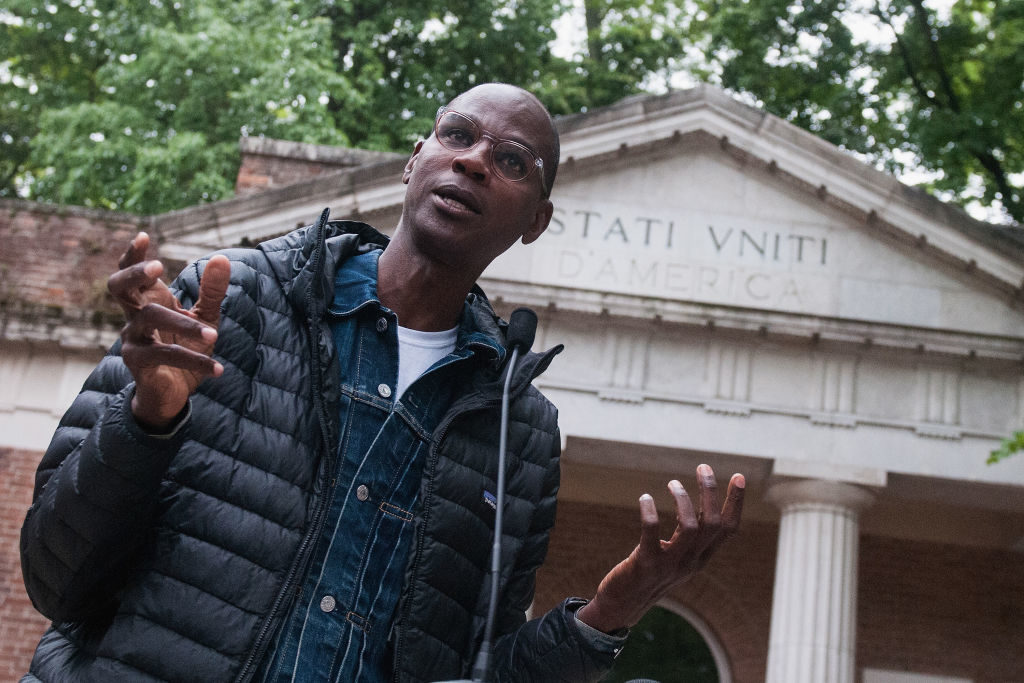
Mark Bradford speaks in front of “Tomorrow Is Another Day,” his project for the U.S. Pavilion at the 2017 Venice Biennale. Photo by Awakening/Getty Images.
There is a broad recognition that Mark Bradford has redefined and expanded the terms of abstract painting, opening that rarefied world to the themes and concerns of mainstream culture, and making those concerns co-equal on his complex surfaces. His social abstraction, rendered entirely in paper, directs us back to Norman Lewis and Alma Thomas, and forward to Kevin Beasley and Firelei Báez, all of whom refuse (and refused) the division between the socio-political and the draw of pure formal invention to conjure riveting worlds that exist right on that threshold.
While his work on canvas is an ongoing analysis of our present, Bradford’s work as co-founder and visionary force behind the LA-based not-for-profit Art + Practice sees the artist investing in social change itself by supporting the needs of the foster youth community in his native Los Angeles. Bradford’s daily dual focus on studio work and on need-based philanthropy has redefined what it means to be an artist in the 21st century.
—Christopher Bradford, director of the Baltimore Museum of Art
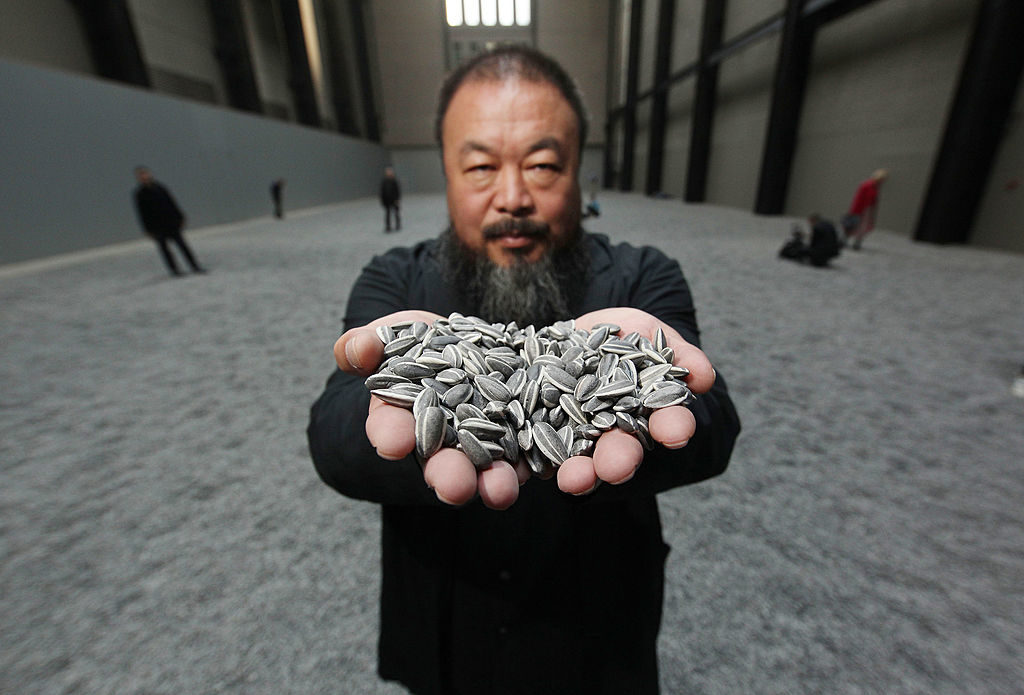
Chinese Artist Ai Weiwei holds some seeds from his installation Sunflower Seeds at Tate Modern in 2010. Photo by Peter Macdiarmid/Getty Images.
Gosh, influential can mean so many different things. In terms of global reach, Ai Weiwei has transformed how social media is used by artists, harnessing platforms like Instagram for both his artwork and, perhaps more importantly, for his activism in China and abroad.
—Alexis Lowry, curator at Dia Art Foundation
In recent years, Chinese artist and dissident Ai Weiwei has been one of the most bald and influential voices inside and outside the art world. He was one of the first to use the web and social media as an artistic/political tool, and his art, bridging and challenging Western and Chinese culture, became internationally acclaimed when China was growing as the main playground of the art system.
—Arturo Galansino, director of Palazzo Strozzi in Florence
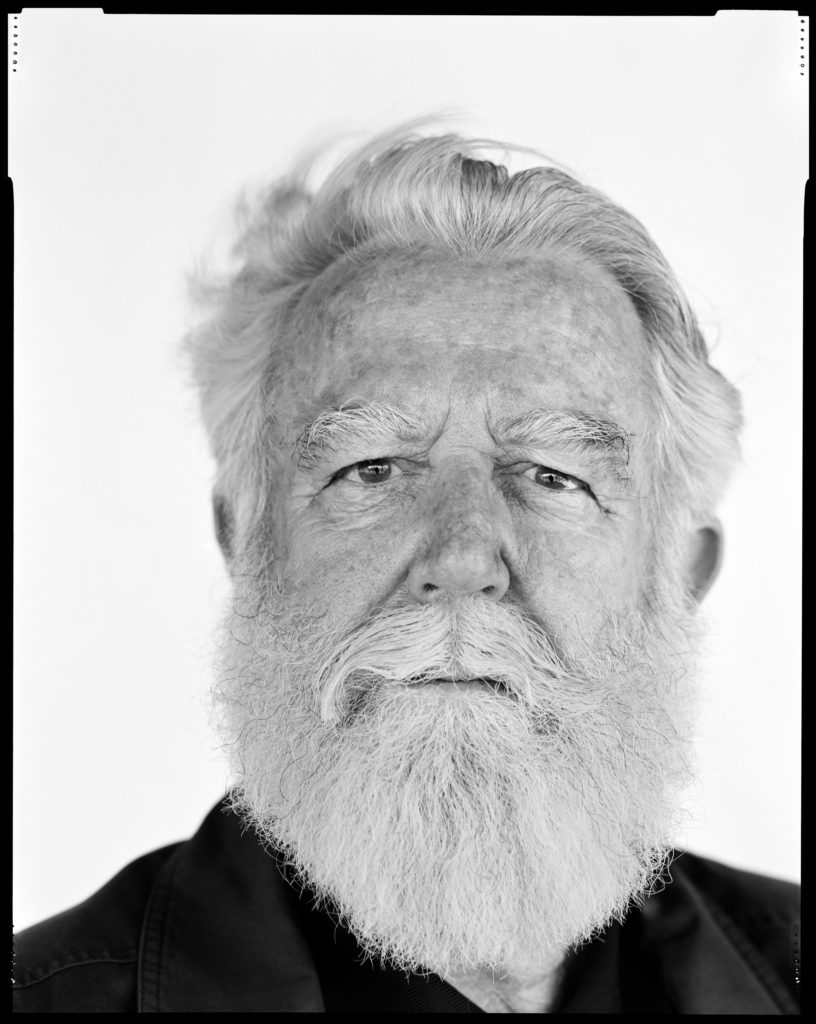
Portrait of James Turrell. Photo by Grant Delin.
Calder, of course! But if I must choose a living artist, I would say James Turrell. His work, including his decades-long Roden Crater project located in the middle of nowhere, has inspired people far outside the bounds of the art world. His genius lies in creating, through his installations, a real-time experience unique to each viewer—and to every moment.
—Alexander S.C. Rower, president of the Calder Foundation
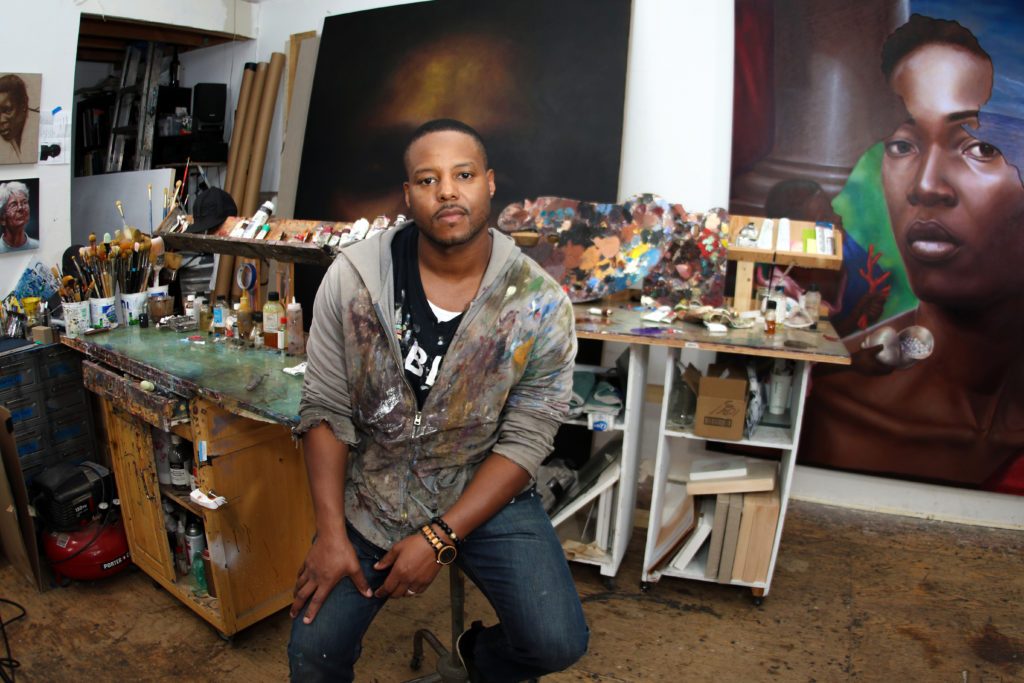
Titus Kaphar, a painter and sculptor at his studio in New Haven, Connecticut. Courtesy of John D. and Catherine T. MacArthur Foundation.
Between the development of his work in painting, sculpture, and installation, his MacArthur Genius award, and the development of [New Haven art space] NXTHVN, Kaphar’s success has had a ripple effect on the next generation of public artists and curators.
—Bridget Cooks, professor of African American studies and art history, University of California, Irvine